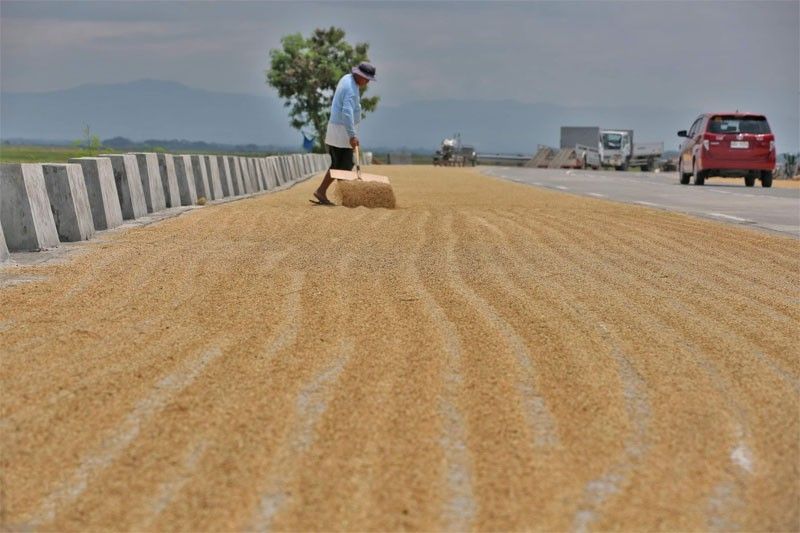Philippines urged to shore up local rice production

MANILA, Philippines — As a major importer of rice, the Philippines will have to make a decisive move to further shore up local production with India’s recent move to ban the export of non-basmati white rice and the added challenge due to the looming El Niño phenomenon.
While India is not a major source of Philippine rice imports, the country will not be spared from the impact of the ban as this will have a ripple effect on global supply and prices.
“Although the Philippines rice import market will not be directly impacted by the ban, the loss of Indian rice exports will lower global supply, which will lead to upward pressure on the staple,” ING Bank senior economist Nicholas Mapa said in a text message.
India supplies around 40 percent of global rice trade and its latest policy is expected to further tighten global supply and send world prices even higher.
Philippine Chamber of Agriculture and Food Inc. (PCAFI) president Danilo Fausto said the Indian rice export ban would stir speculation and competition in the current global supply, causing a dent to the country’s major sources of imported rice.
“There will be higher demand from other rice exporting countries, which will drive prices up. Buyers of India’s rice will trigger the spike in prices,” he said.
Therefore, the Philippines would be affected as it would add pressure on local rice prices, PIDS senior research fellow Roehlano Briones said in a phone interview.
“It will definitely put added pressure on prices. In the last few months, global prices have been increasing and we are actually feeling it. We see rice retail prices slowly going up, even farmgate prices,” he said.
Federation of Free Farmers (FFF) national manager Raul Montemayor said traders are now on a wait-and-see mode whether Vietnam—also a major rice producer and exporter—would raise its prices in reaction to the Indian ban.
Higher rice prices could be felt in the local market “within a few weeks,” he said.
To mitigate the impact of India’s policy on local prices, the government needs to focus on ramping up local rice production, especially with the looming El Niño.
“In order to prepare for potential tightness in rice supply due to this disruption and El Niño, officials may need to act decisively to ensure timely importation of the grain, as well as to help pour resources into ensuring local production improves at the soonest,” Mapa said.
Timing is of the essence due to the challenge of El Niño.
“Our default is to produce our own supply, but there’s the challenge of El Niño in the second cropping season,” Fausto said.
The second cropping season starts in November, with the harvest in February or March. This is when the El Niño is expected to hit the country at varying levels.
“When El Niño starts to hit our rice producing areas, the irrigation systems will have to be ready,” Fausto said.
Vietnam to ban rice exports too?
The last time India implemented a major ban in rice exports in 2007, it not only triggered a world food price crisis, but also created a food security issue in many countries relying on rice as a staple.
At that time, global rice prices soared to $1,000 per metric ton (MT). Currently, rice prices hover around at $500 to 540 per MT.
This time, India’s move may not lead to the same scenario as long as the other rice producing countries will not follow suit.
“Will this lead to that? I don’t think so…As long as nobody else joins their policy, the impact will not be too extreme,” Briones said.
However, Vietnam is also reportedly planning export curbs as well.
With India’s latest policy driving up already elevated prices, Vietnam could further send prices spiraling upward if it pushes through with its plan to restrict rice exports, Montemayor said.
Vietnam is our top source of imported rice. Last year, it accounted for 83 percent of the record high 3.8-million metric ton shipments last year, data from the Bureau of Plant Industry showed.
“Definitely India’s move will drive up prices. Vietnam is reportedly planning export curbs also. Imported rice will be more expensive and will push up retail prices. Or importers will scale down imports leading to tight supply domestically,” Montemayor said.
Incentive to local farmers
Whatever the decision of Vietnam will be, consumers will be the ones to feel the brunt of the impact of the more expensive imported rice.
But this would also incentivize local farmers to plant more rice to provide a cheaper alternative to consumers.
“Imported rice will have higher price. On the upside, that is good for the farmer. On the other hand, consumers will bear the cost of the more expensive imported rice,” Fausto said.
Based on latest monitoring from the Department of Agriculture (DA), the prices of imported and local rice are almost at the same level.
Retail prices of local commercial rice range from P48 to P60 per kilo for special, P42 to P49 for premium, P40 to 49 for well-milled and from P36 to P44 per kilo for regular milled.
On the other hand, prices of imported commercial rice range from P48 to P58 per kilo for special, P45 to 50 for premium, and P41 to P48 for well-milled.
To encourage farmers to plant more, Bantay Bigas spokesperson Cathy Estavillo reiterated their call to strengthen local production, with government providing direct support subsidies, post-harvest facilities and free land distribution to farmers.
They also called for the passage of House Bill 405 or Rice Industry Development Act.
The proposed measure allows rice farmers to avail of production inputs, such as seeds, fertilizer, and tools at discounted prices. It also aims to develop irrigation and post-harvest facilities for farmers.
- Latest
- Trending

























